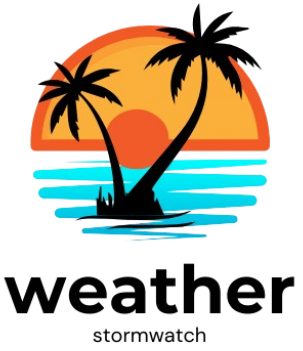Weather plays a critical role in aviation and marine operations, impacting visibility, sea conditions, and flight stability. Understanding key weather advisories—such as Dense Fog Advisories, Small Craft Advisories, Turbulence Warnings, and Gale/Storm Force Wind Warnings—can help pilots, sailors, and maritime operators make informed decisions to ensure safety.
At StormWatch.site, we provide real-time weather alerts and expert analysis to keep you ahead of hazardous conditions. Below, we break down these critical advisories and their implications for aviation and marine activities.
- Dense Fog Advisory (Low Visibility for Pilots & Sailors)
What is a Dense Fog Advisory?
A Dense Fog Advisory is issued when widespread fog reduces visibility to less than 1/4 mile (400 meters). This poses significant risks for:
Pilots: Low visibility complicates takeoffs, landings, and navigation.
Mariners: Fog obscures buoys, other vessels, and shoreline landmarks, increasing collision risks.
Causes of Dense Fog
Radiation Fog: Forms on clear, calm nights when the ground cools rapidly.
Advection Fog: Occurs when warm, moist air moves over cooler surfaces (common over oceans).
Upslope Fog: Forms when moist air rises along elevated terrains, cooling and condensing.
Impacts on Aviation & Marine Operations
For Pilots:
Flight Delays/Cancellations: Airports may halt operations if visibility drops below minimums.
Instrument Flight Rules (IFR) Required: Pilots must rely on instruments rather than visual references.
Increased Risk of Runway Incursions: Poor visibility may lead to miscommunication between aircraft and ground control.
For Mariners:
Reduced Maneuvering Ability: Ships must slow down or anchor to avoid collisions.
Radar & AIS Reliance: Vessels depend on electronic navigation systems when visual cues are unavailable.
Harbor Closures: Ports may restrict vessel movements until fog lifts.
Safety Precautions
Pilots: Use ILS (Instrument Landing Systems) and follow ATC instructions strictly.
Mariners: Activate fog horns, reduce speed, and monitor radar/AIS continuously.
- Small Craft Advisory (Rough Seas for Boaters)
What is a Small Craft Advisory?
A Small Craft Advisory warns mariners of hazardous conditions for smaller vessels, typically due to:
Winds: Sustained speeds of 20-33 knots (23-38 mph).
Waves: Heights of 4-7 feet (varies by region).
Who Should Heed This Advisory?
Recreational boaters (sailboats, fishing vessels, yachts under 65 ft).
Coastal & inland waterway operators.
Causes of Rough Seas
Strong Winds: Generated by storms, squalls, or pressure gradients.
Tidal Currents: Fast-moving water can create choppy conditions.
Distant Storms: Swells from faraway systems can propagate into local waters.
Impacts on Marine Operations
Dangerous Wave Conditions: Risk of capsizing or swamping.
Reduced Vessel Stability: Smaller boats may struggle in steep, short-period waves.
Increased Fatigue: Constant motion makes navigation and crew operations difficult.
Safety Precautions
Postpone trips if possible.
Wear life jackets at all times.
Monitor VHF marine forecasts (NOAA Weather Radio).
Stay close to shore if caught in worsening conditions.
- Turbulence Warning (For Aircraft)
What is a Turbulence Warning?
Turbulence warnings alert pilots of sudden, erratic air movements that can jolt aircraft, potentially causing injuries or structural stress.
Types of Turbulence
Clear Air Turbulence (CAT):
Occurs at high altitudes in cloudless skies.
Common near jet streams.
Mechanical Turbulence:
Caused by wind passing over mountains/buildings.
Thermal Turbulence:
Results from rising warm air (common in summer).
Wake Turbulence:
Generated by larger aircraft (dangerous during takeoff/landing).
Impacts on Aviation
Passenger/crew injuries from sudden jolts.
Structural stress on aircraft components.
Flight path deviations requiring altitude adjustments.
Safety Measures for Pilots
Use weather radar to detect turbulent zones.
Request altitude changes from ATC if needed.
Secure cabin items & ensure seatbelts are fastened.
- Gale Warning / Storm Force Winds (Strong Winds at Sea)
What is a Gale or Storm Warning?
Gale Warning: Sustained winds 34-47 knots (39-54 mph).
Storm Warning: Winds 48+ knots (55+ mph).
Causes of Strong Marine Winds
Extratropical Cyclones (Nor’easters, etc.).
Tropical Storms/Hurricanes.
Fast-moving cold fronts.
Impacts on Ships & Offshore Operations
High Waves (20+ feet in storms).
Difficulty steering & maintaining course.
Risk of cargo shift or vessel damage.
Safety Precautions for Mariners
Seek sheltered waters if possible.
Reinforce hatches & secure loose gear.
Use storm anchors if drifting is a risk.

